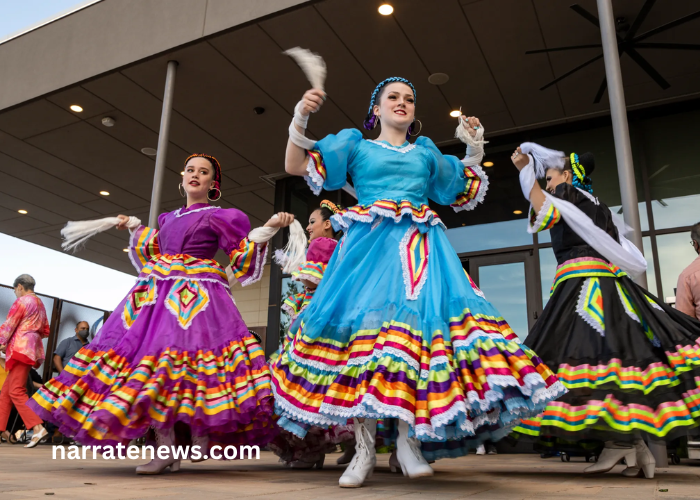
Cinco de Mayo Events: Celebrating Mexican Culture and Heritage
Cinco de Mayo, celebrated on the 5th of May every year, is a vibrant and colorful festival that commemorates the Mexican army’s victory over the French forces at the Battle of Puebla in 1862. While it holds significant historical and cultural importance in Mexico, Cinco de Mayo has also become a widely celebrated holiday in the United States and other parts of the world, showcasing the rich traditions, music, dance, and cuisine of Mexican culture. In this article, we’ll explore the significance of Cinco de Mayo, the various events and festivities held to mark the occasion, and how people come together to honor Mexican heritage.
Understanding the Significance of Cinco de Mayo
Cinco de Mayo is often misunderstood as Mexico’s Independence Day, which is actually celebrated on September 16th. Instead, Cinco de Mayo commemorates the unlikely victory of the Mexican army over the French forces at the Battle of Puebla on May 5, 1862. At the time, Mexico was in significant debt to European countries, and France sought to establish a French empire in Mexico. However, against the odds, the Mexican forces, led by General Ignacio Zaragoza, successfully defended the city of Puebla, a victory that boosted morale and symbolized resilience and national pride.
While Cinco de Mayo is not a federal holiday in Mexico, it is observed as a regional holiday in Puebla and has gained widespread recognition in the United States, where it is celebrated as a day to honor Mexican culture, heritage, and contributions to society. From lively parades to festive gatherings, Cinco de Mayo events provide an opportunity for people of all backgrounds to come together and celebrate the vibrancy and diversity of Mexican culture.
Exploring Cinco de Mayo Events
Cinco de Mayo events encompass a wide range of festivities that showcase various aspects of Mexican culture, including music, dance, food, and art. These events often take place in cities and towns across the United States and feature a mix of traditional and contemporary elements. Here are some common types of Cinco de Mayo events:
1. Parades and Festivals:
Parades are a hallmark of Cinco de Mayo celebrations, featuring colorful floats, traditional costumes, marching bands, and dance groups. These parades often wind through city streets, drawing large crowds of spectators who come to enjoy the spectacle and immerse themselves in the festive atmosphere. Festivals held in conjunction with parades may include live music performances, dance showcases, artisanal markets, and culinary demonstrations, offering a comprehensive experience of Mexican culture.
2. Live Music and Dance Performances:
Music and dance play central roles in Cinco de Mayo festivities, with performances ranging from traditional folkloric dances to contemporary music genres such as mariachi, salsa, and cumbia. Live music concerts, dance recitals, and street performances provide opportunities for both artists and audiences to celebrate Mexican music and dance traditions while enjoying the infectious rhythms and melodies that characterize Mexican music.
3. Food and Drink Festivities:
No Cinco de Mayo celebration would be complete without indulging in delicious Mexican cuisine and beverages. Food festivals and tastings showcase a diverse array of dishes, from tacos and tamales to enchiladas and guacamole. Street vendors and food trucks offer authentic Mexican street food, while restaurants may feature special menus highlighting regional delicacies. Tequila tastings, margarita competitions, and mezcal sampling events add a spirited flair to the festivities, allowing attendees to savor the flavors of Mexico.
4. Cultural Workshops and Exhibitions:
Cinco de Mayo events often include educational workshops and exhibitions that delve into various aspects of Mexican culture, history, and arts. These may include cooking demonstrations, craft workshops, art exhibits, film screenings, and lectures on topics such as Mexican folklore, traditions, and historical significance. Such activities provide opportunities for attendees to learn, engage, and gain a deeper appreciation for Mexican culture beyond the festivities.
5. Community Outreach and Engagement:
Beyond the festivities, Cinco de Mayo events often serve as platforms for community outreach and engagement, fostering connections and collaboration among diverse groups of people. Community service projects, volunteer opportunities, and charitable initiatives may be organized in conjunction with Cinco de Mayo celebrations, reinforcing the spirit of unity, generosity, and solidarity that underpins the holiday.
Embracing Diversity and Inclusion
Cinco de Mayo events exemplify the power of cultural celebration to foster understanding, appreciation, and unity among people from different backgrounds. By embracing the diversity and richness of Mexican culture, these events promote inclusivity and cross-cultural exchange, bridging divides and building stronger communities. Whether attending a parade, sampling authentic cuisine, or learning about Mexican history and traditions, Cinco de Mayo provides an opportunity for people to come together, celebrate diversity, and honor the vibrant tapestry of human heritage.
Conclusion: Celebrating Cinco de Mayo
Cinco de Mayo events offer a vibrant tapestry of cultural experiences that celebrate the spirit, resilience, and heritage of Mexico. From colorful parades to lively festivals, these events bring communities together to honor Mexican culture through music, dance, food, and art. As we commemorate Cinco de Mayo each year, let us embrace the values of unity, diversity, and inclusion, recognizing the importance of cultural celebration in fostering understanding and solidarity among people of all backgrounds.


